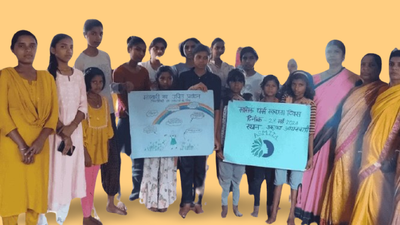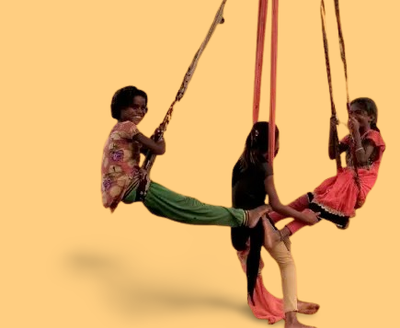Overlooked Impact of Gendered Job Descriptions
Uncovering how gendered language in JDs discourages women from applying for leadership positions and exploring solutions to create inclusive job postings

Despite the growing enthusiasm among recruiters and companies to increase the number of women in their workforce, invisible barriers often stand in the way. These invisible barriers also perpetuate societal conditioning that can discourage women from applying and pursuing opportunities. For women to see themselves represented in important and high-level job positions, it is crucial to address these challenges and empower women while also pursuing practical solutions to often overlooked aspects of the application process.
Although the application process is only the starting point of obtaining a job position, I found disappointing statistics even at this level. According to a movemeon article, “on average, women would view 25% more jobs before making an application than a man”. This led me to believe there was a discord in the process of application where a woman gets discouraged from applying to a job, which could be traced back to the job descriptions they interact with. I was curious to see if gendered wording in job descriptions could have an impact on the likelihood of women applying for their desired positions.
Studies show that women were discouraged from applying for jobs with masculine-coded language, whereas men were not similarly affected by feminine-coded language.
I first conducted some background research, leading me to find some very interesting insights on this seemingly trivial facet of employment equality. A notable study by the University of Waterloo and Duke highlighted a significant link between gender and word choice. The study stated a strong link between gender and words. Some words were more 'masculine-coded', eg. active, adventurous, headstrong, while others were more 'feminine-coded', e.g. interpersonal, polite, enthusiastic. This societal conditioning reinforces the stereotype that men are better leaders and have more relevant skills in the workplace.
The study also revealed that women were discouraged from applying for jobs with masculine-coded language, whereas men were not similarly affected by feminine-coded language. This finding was corroborated by The World Economic Forum and The Harvard Business Review, which noted that such language might suggest that a position is typically held by men, making women hesitant to apply due to a fear of facing potential workplace bias.
To further explore these findings, I also went on to conduct a more hands-on exploration to gather data that could be analysed and visualised.
The EquiLead platform
EquiLead is a platform and initiative dedicated to increasing the proportion of women in leadership positions particularly in the social impact sector. EquiLead hosts a range of 200 - 300 job postings, which made it the perfect sample to carry out some firsthand research.
To carry out the research, I used an open source gender decoder tool, which was developed based on the earlier mentioned University of Waterloo and Duke Study. The tool operates by assessing a job description and classifying it as ‘masculine’ or ‘feminine’ coded based on the type of wording the description uses. Using Python Web-Scraping, CSS, and Pandas, we ran the tool on a sample of 85 job descriptions from the EquiLead platform to assess the different proportions of gendered job descriptions and how to resolve them.
Using the visualisation software Flourish, I converted the gathered data (descriptions and gender classifications) into visualisations which I could gain insights from.
The proportion of descriptions which were masculine, feminine, and neutral coded:
Although EquiLead is a platform built specifically for female applicants, quite a high proportion of descriptions were 'masculine-coded'. Ideally, all descriptions should be neutral coded with a slight leeway towards feminine-coded wording, as men are not deterred from this, and the ultimate aim is to encourage female applicants without deterring male applicants.
It was not just enough to classify different descriptions and view proportions, I wanted to specifically see the type of language that was used based on the respective classification, which could contribute to more specific solutions for this barrier.
The most differing commonly used words for masculine, feminine, and neutrally worded job descriptions respectively:
Masculine
Feminine
Neutral
The differences in word usage across these job descriptions highlight the impact of gendered language. Masculine-coded language emphasises leadership and strategy. Feminine-coded language focuses on teamwork and social aspects. Neutral language, on the other hand, is more project-oriented and focuses less on descriptive attributes of the candidate which can lead to gendered and vague language.
Potential Application
The narrative and associations of women in the workforce needs to change. Understanding these gender-associations with job descriptions and its impact is extremely important so that recruiters can be more careful with their wording and encourage more female applicants. This understanding is also important for female applicants because many a time, female applicants do not even recognise the reason for their deterrence from applying to a job. This is more so about the kind of language used in the job description and the workplace culture it indicates.
Potential steps towards a solution could be utilising AI to automatically alter the language in job descriptions, first on a small scale, and monitoring its impact on the proportion of female applicants applying for these jobs. Simultaneously, being in conversation with and collecting anecdotal evidence from women in the industry can support this process. Monitoring the impact of these alterations on the proportion of female applicants would give a clear idea of how to develop a widespread and concrete solution which could be utilised by companies all over the world to encourage female applicants and eventually empower them to change the narrative for themselves.
aikyam fellows’ values of valuable solutions by using what is already available, attention to detail, and teaching and sharing are exemplified in this project through the tackling of an often-overlooked aspect of female empowerment. Through the collaboration with EquiLead and the development of this project, we hope to bring about a change in the low proportion of women in leadership positions and rewrite the narrative of women in the workforce across India.
For a more detailed documentation of this project and aikyam fellows' collaboration with EquiLead, please view this presentation!






